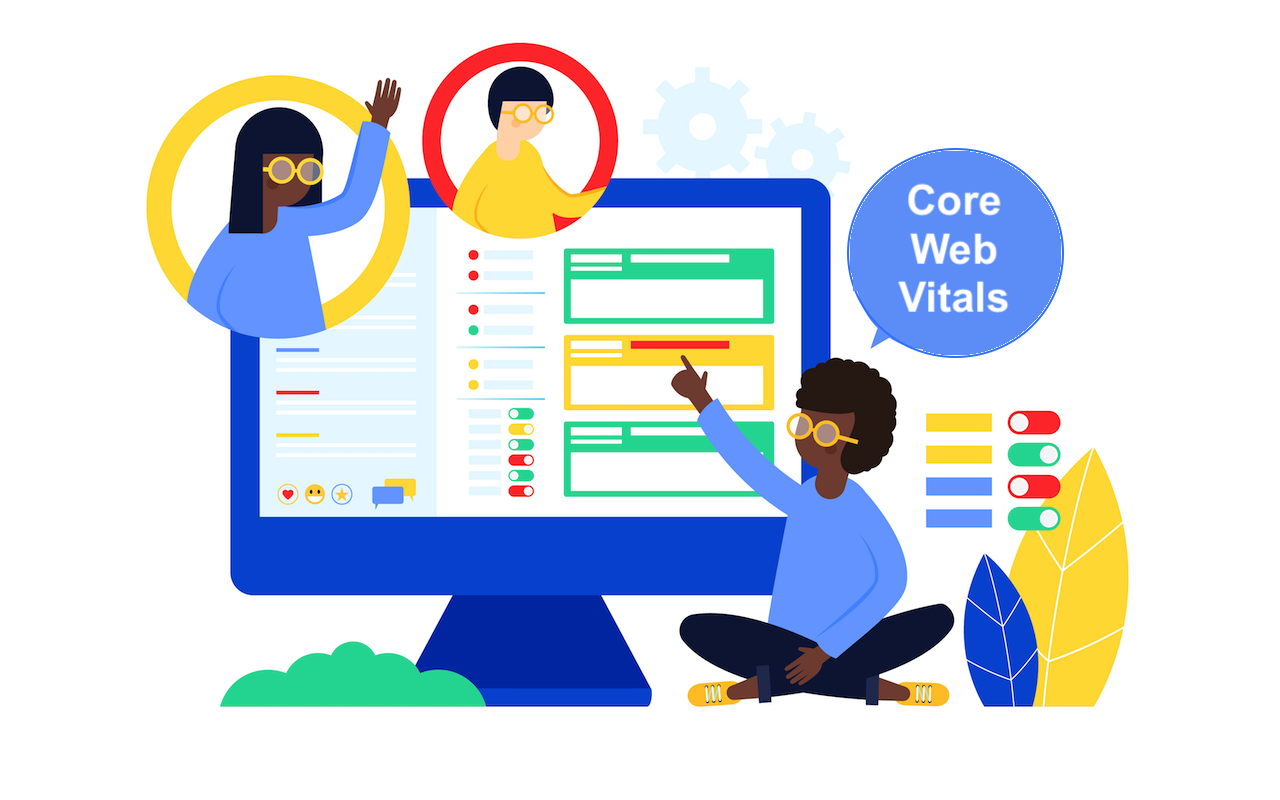
In today’s digital world, having a website is not enough—you also need to make sure it performs well. Core Web Vitals is one of the biggest factors affecting how your site ranks in search engines and how many people visit it.
You may have heard the term before, but what does it actually mean? And more importantly, how does it impact your SEO (Search Engine Optimization) and website traffic?
In this article, we’ll break down what Core Web Vitals are, why they matter, and how improving them can help you attract more visitors and climb higher in search results—all in plain, easy-to-understand language.
What Are Core Web Vitals?
Core Web Vitals are a set of specific factors that Google considers important for a user’s overall experience on a webpage. These metrics focus on how fast, stable, and responsive your site is when someone visits it.
There are three main Core Web Vitals:
- Largest Contentful Paint (LCP) – This measures loading speed. It looks at how long it takes for the main content (like an image or heading) to load and appear on the screen.
- First Input Delay (FID) – This measures interactivity. It checks how quickly your website responds when a user first tries to click, tap, or type something.
- Cumulative Layout Shift (CLS) – This measures visual stability. It tracks whether things move around unexpectedly on the screen as the page loads (for example, when a button jumps down right as you're about to click).
Why Core Web Vitals Matter for SEO
In May 2021, Google officially made Core Web Vitals a ranking factor in its search algorithm. This means your website’s performance on these metrics can affect where it appears in Google’s search results.
Here’s how it impacts your SEO and traffic:
- Better Rankings in Google Search
Google wants to give users the best possible experience. Websites that load quickly, respond fast, and don’t shift around while loading are easier to use—and Google rewards them with better visibility. If your site performs well on Core Web Vitals, you’re more likely to show up higher in search results, leading to more clicks and visits. - Lower Bounce Rates
People hate slow or jumpy websites. If your pages load slowly or behave strangely, visitors will leave—and fast. This is called a high bounce rate, and it tells search engines your site may not be user-friendly. Improving Core Web Vitals helps keep people on your site longer, which signals to Google that your content is valuable. - Improved User Experience
At the end of the day, SEO is about making websites better for people. When you focus on Core Web Vitals, you’re improving the experience for real users—not just chasing rankings. And happy users are more likely to come back, share your content, and become customers.
Breaking Down the 3 Core Web Vitals (With Examples)
Let’s take a closer look at each metric and how to improve it:
1. Largest Contentful Paint (LCP)
Goal: Load your main content in under 2.5 seconds.
Example: You open a news article on your phone. The headline and main image should appear within the first few seconds. If they take too long, you’ll likely hit the back button.
How to Improve LCP:
- Optimize images by compressing them
- Use fast, reliable hosting
- Minimize large page elements
- Reduce render-blocking CSS and JavaScript
2. First Input Delay (FID)
Goal: Respond to the first user interaction in under 100 milliseconds.
Example: A user clicks a menu button or types in a search bar. If your site freezes or takes too long to respond, the user gets frustrated.
How to Improve FID:
- Reduce the amount of JavaScript on your pages
- Break long tasks into smaller pieces
- Use browser caching
- Avoid heavy third-party scripts
3. Cumulative Layout Shift (CLS)
Goal: Keep layout shift score below 0.1
Example: You try to click “Buy Now” but suddenly the button moves because a banner ad loaded late. This is annoying—and it can even cause accidental clicks.
How to Improve CLS:
- Always include size attributes for images and videos
- Don’t insert new content above existing content unless needed
- Avoid animations that change layout suddenly
Tools to Measure Core Web Vitals
You don’t need to guess how your website is doing. There are many free tools you can use to check and improve your Core Web Vitals:
- Google PageSpeed Insights – Shows detailed Core Web Vitals data and suggestions
- Lighthouse – Built into Chrome’s DevTools, offers performance audits
- Google Search Console – If your site is verified, you can see how all your pages perform
- Web Vitals Chrome Extension – Live feedback while browsing
These tools give you both lab data (simulated) and field data (real user data), so you can see how your site performs in different conditions.
How Core Web Vitals Affect Website Traffic
Better Core Web Vitals = better user experience + better SEO = more traffic.
Here’s what happens when you optimize your website:
- Higher Search Rankings: Improved performance can bump you up in Google results.
- More Clicks: Higher rankings naturally bring more visitors.
- Lower Bounce Rates: People stay longer when your site loads quickly and works well.
- More Page Views: Users are more likely to explore if your site is smooth and stable.
- Word of Mouth and Sharing: People are more likely to share a good experience.
Let’s say two websites offer the same product. One loads fast, looks clean on mobile, and is easy to use. The other is slow and jumpy. Which one would you stay on? Which would you buy from?
That’s why Core Web Vitals have a real-world impact on your traffic and conversions.
Tips for Business Owners and Bloggers
Even if you’re not a developer, there are still things you can do to improve your Core Web Vitals:
- Choose a mobile-optimized theme for your website
- Avoid clutter—keep your layout simple
- Compress and resize images before uploading
- Limit the number of popups or ads
- Use a content delivery network (CDN) to speed up your site globally
- Regularly test your pages using PageSpeed Insights
And if you do work with a developer, make Core Web Vitals part of the conversation from day one.
Final Thoughts
Google’s focus on Core Web Vitals is part of a bigger trend: putting users first. Search engines want to rank websites that provide value and a smooth experience, and Core Web Vitals are a big part of that. When you make your website faster, more responsive, and visually stable, everyone wins—your visitors, your rankings, and your business.
If you haven’t paid attention to Core Web Vitals yet, now is the perfect time to start. The tools are available, the impact is real, and the results can be truly rewarding.
Share this post
Leave a comment
All comments are moderated. Spammy and bot submitted comments are deleted. Please submit the comments that are helpful to others, and we'll approve your comments. A comment that includes outbound link will only be approved if the content is relevant to the topic, and has some value to our readers.

Comments (0)
No comment